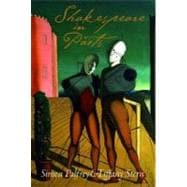
Note: Supplemental materials are not guaranteed with Rental or Used book purchases.
Purchase Benefits
What is included with this book?
| Intorduction | |
| History | |
| The Actor's Part | |
| The Actors | |
| Rehearsing and Performing | |
| Interpreting Cues | |
| History of the Cue | |
| Interpreting Shakespeare's Cues | |
| Cues and Characterisation | |
| Waiting and Suddenness: the Part in Time | |
| Repeated Cues | |
| Repeated cues: from Crowds to Clowns | |
| Repeated cues: comi-tragic/tragic-comic pathos | |
| Repeated cues and the battle for the cue-space: The Merchant of Venice | |
| Repeated cues and tragedy | |
| Repeated cues and the cue-space in King Lear | |
| Repeated cues and post-tragic effects | |
| Repeated Cues and the Cue-Space in The Tempest | |
| The Actor With His Part | |
| History | |
| Dramatic prosody | |
| Prosodic Switches: From Actor's Prompt to Absent Presence | |
| Midline shifts in `mature' Shakespeare: from actorly instruction to `virtual' presence | |
| Case studies: six romantic heroines and three lonely men | |
| Table of Contents provided by Publisher. All Rights Reserved. |
The New copy of this book will include any supplemental materials advertised. Please check the title of the book to determine if it should include any access cards, study guides, lab manuals, CDs, etc.
The Used, Rental and eBook copies of this book are not guaranteed to include any supplemental materials. Typically, only the book itself is included. This is true even if the title states it includes any access cards, study guides, lab manuals, CDs, etc.